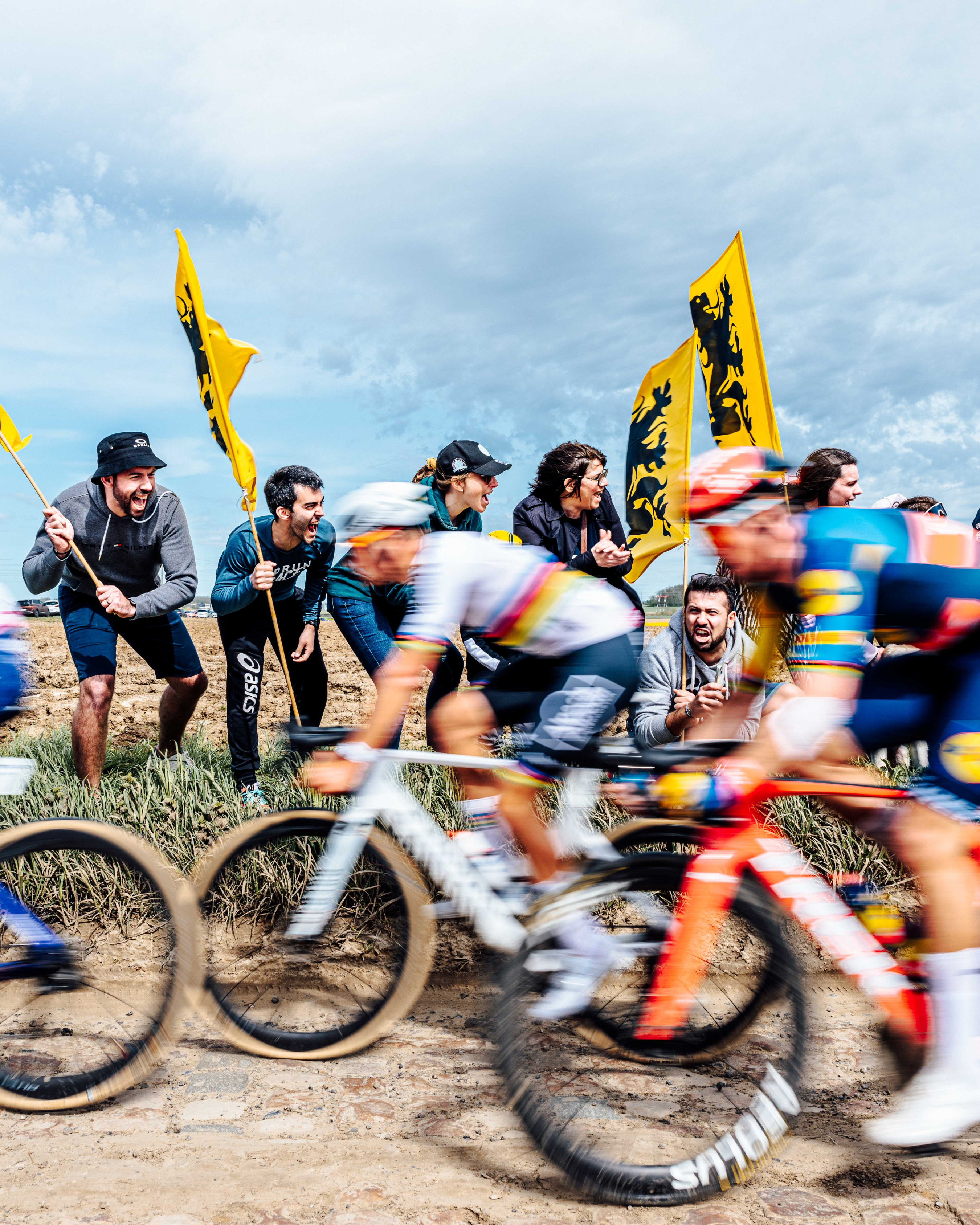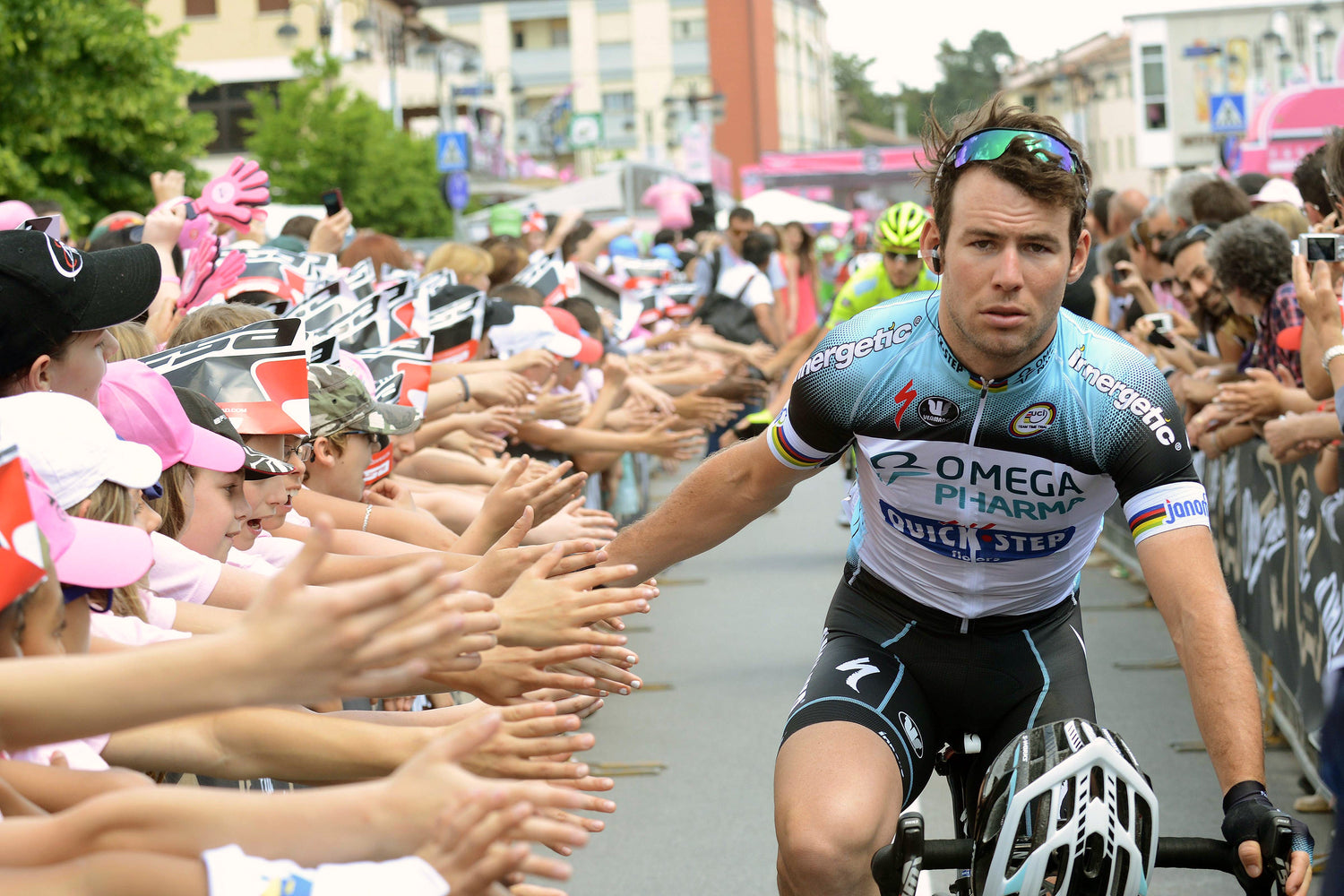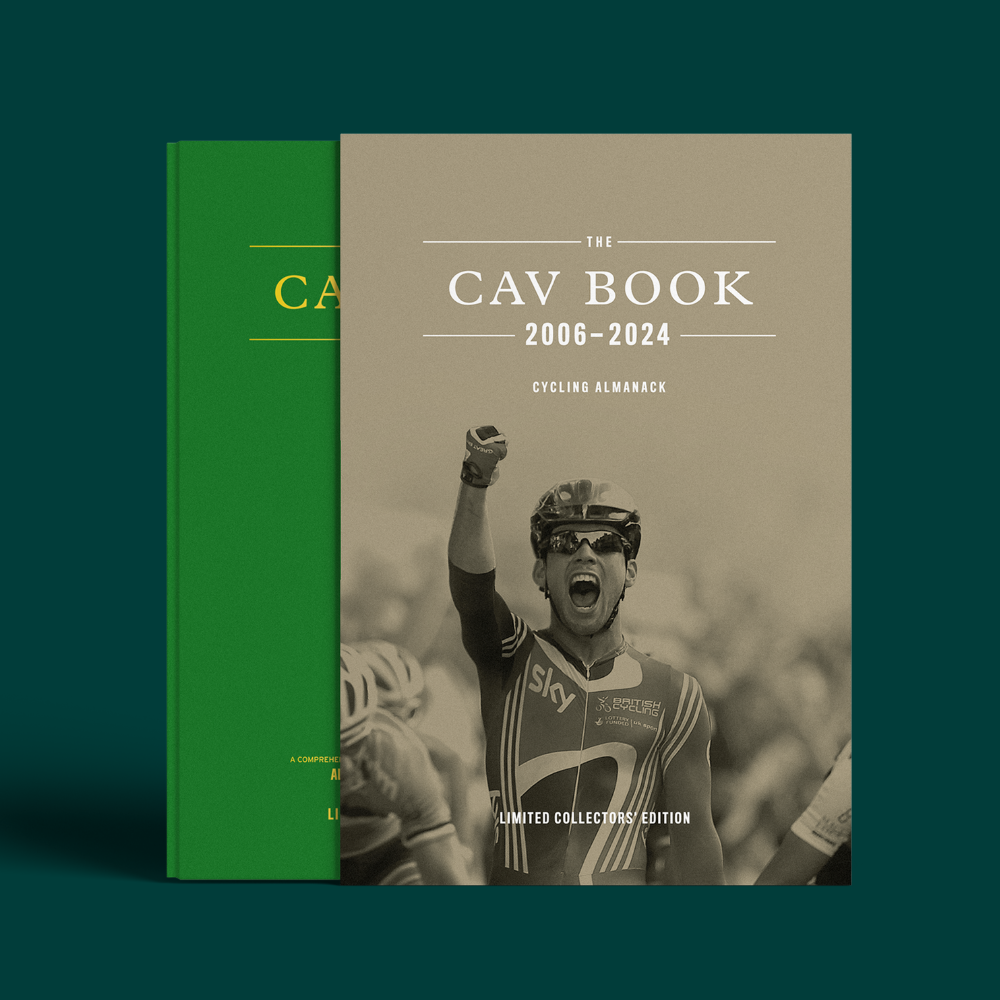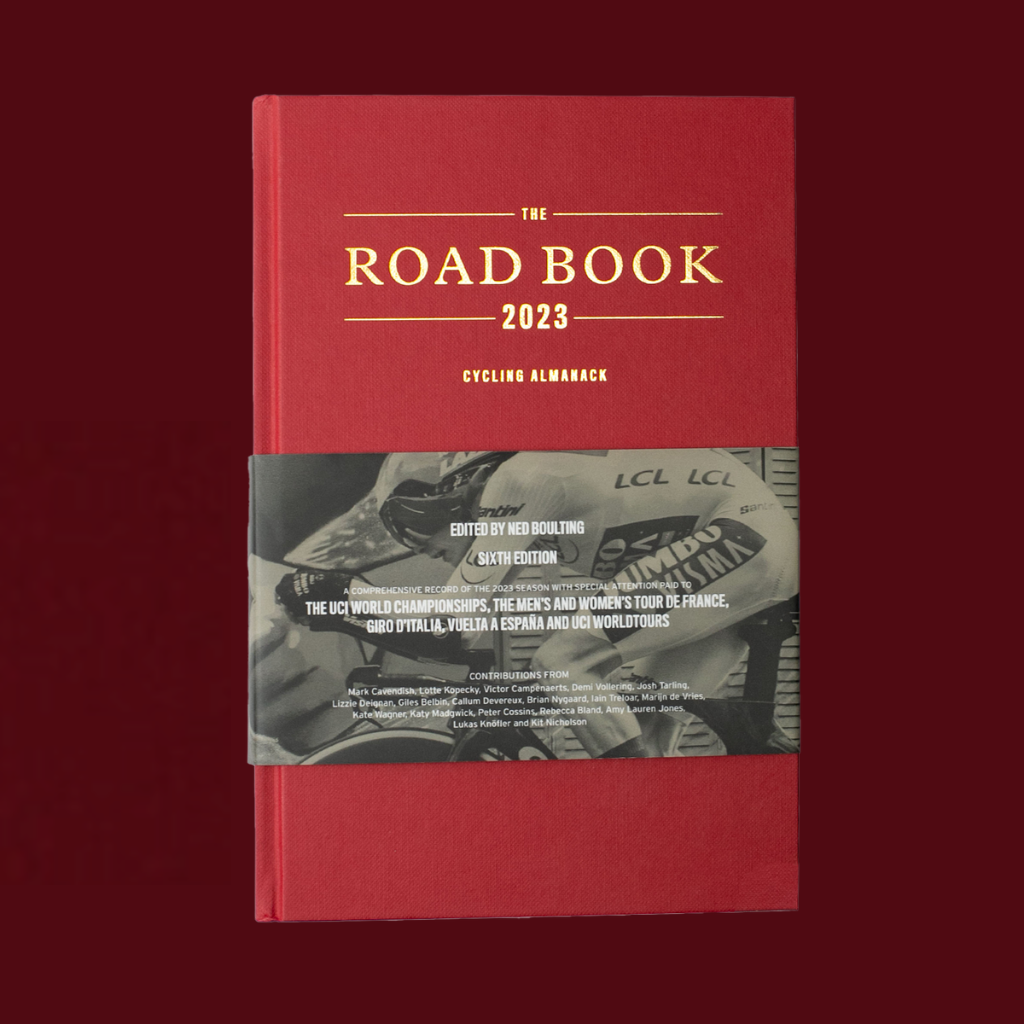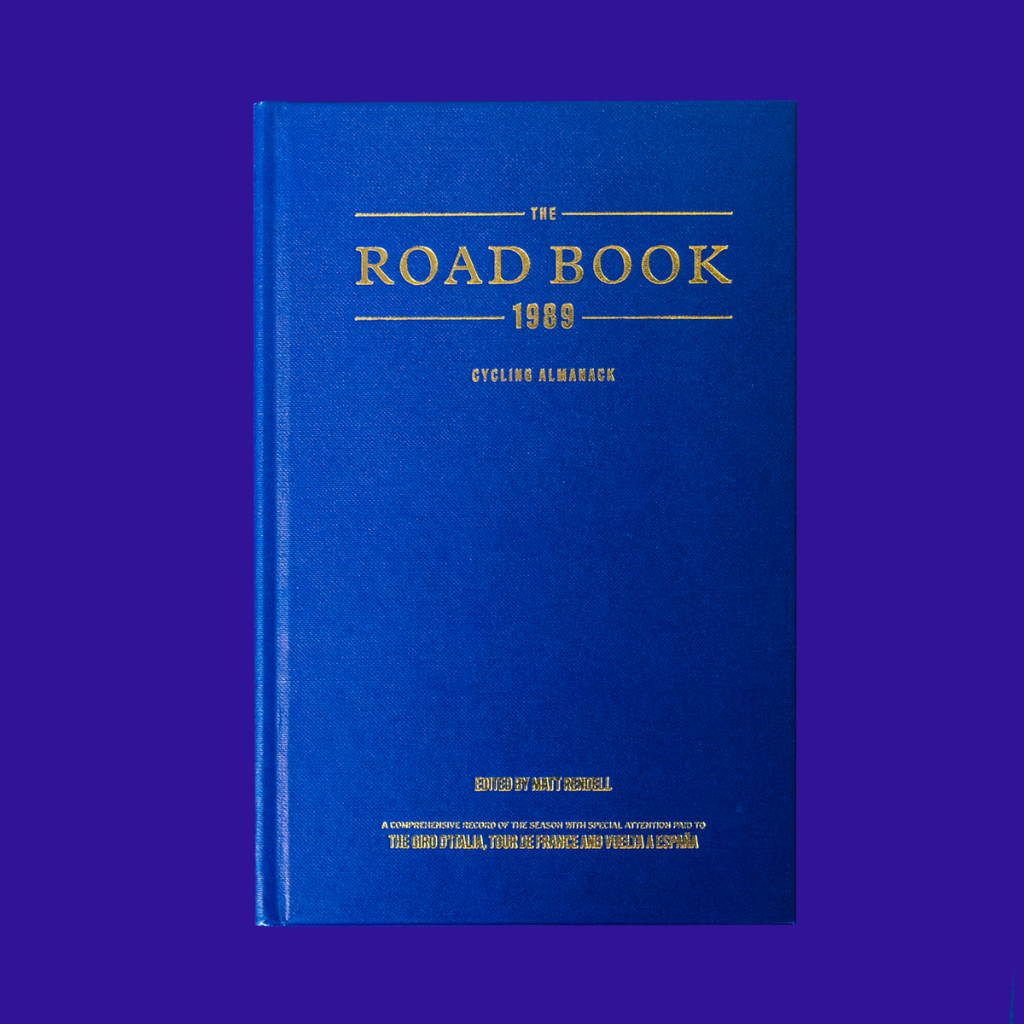Third time’s a charm!
Every couple of weeks we’ve been breaking down what's happened in the cycling world, and what to look forward to. The season is springing into life, and the altar of Flandrian cycling serves up a rapturous finale to Flemish Holy Week.
We’ve had an intriguing couple of weeks of racing, with our first glimpse at which Giro d’Italia contenders look strongest at the Volta a Catalunya; and a couple of massive results for the cobbled classics favourites at the E3 Saxo Classic and Gent Wevelgem. Oh, and a small piece of news about some unknown Slovenian rider with weird tufty hair.
If you’re anything like us you’ve been riding up and down your local roughshod stone streets, imagining that you’re Mathieu van der Poel ripping up the final cobbled sector on your way into the Roubaix Velodrome. All whilst you roar yourself home doing your best Ned Boulting impression.
Okay maybe that was just us...
What’s Been Happening?
Milan-Sanremo
The first women’s instalment of this race since 2005 was won by Lorena Wiebes after Lotte Kopecky shut down the race in favour of SD-Worx Protime’s sprinting superstar. Elisa Longo-Borghini (UAE Team ADQ) launched a valiant effort to escape off the front in the final few kilometres in defiance of the Dutch super-team. The Italian champion was denied a fairy-tale victory by the sheer physical power of the World Champion who hauled Wiebes back into contention for a landmark win after failing to get away on her own terms.
It was a thoroughly entertaining race, though it seems the shorter distance of the women’s race makes it even more difficult for the punchier riders to make a difference on the Cipressa or the Poggio. Though we haven’t seen enough of the race to define it as a sprinter’s classic yet, an increase in distance seems to be something welcomed by many in the peloton. It would certainly be fitting for Milan-Sanremo to be the longest race on both the men’s and women’s calendars.
As the women were crossing the finish line, the men were getting ready to treat us to perhaps the most exciting 30-minutes of racing in years. There was only really one topic being discussed pre-race: would Pogačar (UAE Team Emirates XRG) finally conquer this most elusive of monuments?
The prevailing theory seemed to hold that in order to defeat his faster rivals, the likes of Philipsen and van der Poel (both Alpecin-Deceuninck) UAE Team Emirates would have to ride the Cipressa and the Poggio at an infernal pace: the Cipressa in under 9 minutes his team bosses said before the race.
For the vast majority of its 289 kilometres the race was quiet, the tension slowly ramping up as those white and black jerseys of UAE Team Emirates slowly slid towards the front as they approached the 24km mark and the Cipressa. UAE’s clear plan of simply burning every single rider who wasn’t wearing a Rainbow Jersey on the Cipressa to rip the legs from under their rivals was dashed by a crash as they turned onto the climb which shredded the delicate cohesion of the peloton.
As Tim Wellens turned it up to 11 on the front, his leader was sitting about 15 wheels pack, trying to work his way through the riders to take advantage of Wellens’ sacrifice. Wellens was forced to rapidly pull out of the line to make way for Pogačar’s one remaining teammate, a certain Jhonatan Narvaez who then proceeded to decimate himself before, 3km from the top of the Cipressa, Pogačar launched his inevitable attack.
The world held its breath as the Slovenian started to pound the pedals in that iconic style of his, wrenching his bike from side to side. Instantly the peloton, which had been clinging desperately to Narvaez’s heels, gave up the fight. The Slovenian, who was producing an average pace of 38.6kph uphill, had managed the almost unthinkable, pushing every other rider to breaking point.
Well, almost every rider.
Despite five or six of his trademark surging attacks, which normally only Vingegaard seems capable of matching, Pogačar could not shake the looming figure of Mathieu van der Poel (Alpecin-Deceuninck) from his wheel. Just as last year, the Dutch monuments man was unshakable, coolly matching every single one of Pogačar’s efforts, never more than a few centimetres from the bobbing rainbow bands. The powerful figure of time trial specialist and INEOS Grenadiers’ man of the moment Filippo Ganna wasn’t far behind, setting a doggedly unrelenting pace which kept him in the frame. The trio crested the Cipressa with a 30 second lead on the peloton, and by the time they reached the Poggio 9km later it had ballooned to almost a minute.
The most important 6 minutes in cycling didn’t disappoint, as Pogačar once again desperately tried to lose his companions. He fought admirably; his normally assured grin replaced with determined grimace as the World Champion suffered in a way we’ve rarely seen. Ganna was temporarily distanced but kept his own pace and continued to burn his way up the slope in a stoic effort to remain in contention, which the Italian later admitted had taken a few years off his lifespan such was the level of exertion required.
It was stunning, riveting watching as for the first time since the 1990s, dial up internet and sold-out Oasis stadium shows, a move on the Cipressa looked like it was going to stick. It was with disbelief that Pogačar spied van der Poel still sat on his wheel, and with outright dismay that he watched van der Poel launch himself past the Slovenian as they reached the final 500m of the Poggio. For a second the world, and its champion, were dumfounded, but Pogačar dug deeper than we’ve ever seen him go, clawing his way back to his rival as they crested the Poggio and began the winding descent to the Via Roma, working together to keep the devastatingly quick Ganna off their tail.
Top Ganna would not be denied however, and as they rolled under the Flamme Rouge, he caught them, overcoming a 20 second deficit and setting up a game of cat and mouse before their three-up sprint. In the end, despite the ride of a lifetime for Ganna and Pogačar’s best efforts, van der Poel would not be denied his 7th monument and 2nd Milan-Sanremo. It was a phenomenal win, and even better watching, a fantastic display of what makes cycling such a brilliant sport.

Volta a Catalunya
One of the oldest, and most prestigious one-week stage races came to a conclusion in Barcelona after a week of racing coloured and characterised by bad weather, shortened stages and surprise victors.
Primož Roglič (Red Bull Bora-Hansgrohe) took the GC title from Juan Ayuso (UAE Team Emirates XRG) with a brilliant attack on the final stage into Barcelona, crossing the line 30 seconds ahead of the Spaniard. The two riders will face off again in about a month’s time at the Giro d’Italia, and whilst Ayuso is in solid form so far this year, the Slovenian 5-time grand tour winner has so much experience that it's hard to look past him as the favourite for the Maglia Rosa.
A young Briton also lit up the race providing some much-needed good news for the almost unbelievably unlucky Visma-Lease a Bike. Matthew Brennan took his maiden World Tour victory on Stage 1 in an uphill sprint against the odds as he displayed not only his physical power, but also a level of confidence and self-belief which belies his young years. The 19-year-old star in waiting from Darlington followed this up with a victory on Stage 5 before abandoning the race to prevent over-extending himself. We wouldn’t be surprised to see the Brit show up at a crop of classics this spring as his team scrabble for form.

E3 Saxo-Classic
The traditional warm-up race for the Ronde Van Vlaanderen which covers many of the same famous Flemish bergs is always entertaining and can provide an insight into who’s in strong form. This year we didn’t learn much we didn’t already know as Mathieu van der Poel took a second consecutive victory at the race in dominant style. On the Oude Kwaremont with 40km to go van der Poel launched one of his typically oppressive classics attacks, ripping a very strong Mads Pedersen (Lidl-Trek) and Filippo Ganna from his wheel. Two punchy riders who are both in sublime form couldn’t match the former world champion once he put the hammer down on his preferred cobbled terrain, and we’re beginning to doubt whether anyone can.
Gent-Wevelgem
In a race which frequently goes to the fastest man, you’d perhaps be forgiven for thinking that a bunch sprint had granted us a podium featuring: Mads Pedersen, Tim Merlier (Soudal Quick-Step) and Jonathan Milan (Lidl-Trek).
You’d be wrong though. Mads Pedersen joined the likes of Pogačar and van der Poel in the increasingly fashionable long-range attack club, launching himself from 50km out to take a second consecutive victory, and his half-century of pro wins, by 49 seconds. The Dane joins the likes of Peter Sagan, Mario Cipollini, Tom Boonen and one Eddy Merckx on three wins at the race and is the only one likely to extend that record. It was a display of sheer confidence, daring tactics and physical power, and without doubt a massive marker of form at the start of Holy Week. He won’t be the favourite for either the Ronde or Paris-Roubaix, but it indicates that he might well be able to stay with Pogačar and van der Poel when the going gets tough.

Gent-Wevelgem Women
Lorena Wiebes took her 100th career win in the women's edition of Gent-Wevelgem (her second favourite accolade we’re told, just behind her title of Road Book contributor) in what has already been a stellar season for the SD-Worx rider. The team seem to have stumbled on a winning formula: let Lotte Kopecky attempt a long-ranged attack, and if she can’t manage to get away, the World Champion becomes possibly the dream lead-out rider for Wiebes. It worked on the Via Roma and in Wevelgem and unless the likes of Longo Borghini and former teammate Demi Vollering (FDJ-Suez) can find a way to thwart the Dutch team, we may well see the same results at the Tour of Flanders and Paris-Roubaix.
Classic Brugge-De Panne Men’s
The definitive sprinters classic was a source of considerable controversy in the men’s race, as probably the most chaotic final 5km we’ve ever seen was marred by a series of mass pileups. The likes of Arnaud De Lie (Lotto), Arnaud Démare (Arkéa B&B) and Tim Merlier (Soudal Quick-Step) left battered, bruised and reduced to spectators by the time Juan Sebastian Molano (UAE Team Emirates XRG) launched his winning move with 300m to go from a much-reduced group.
Crashes are a part of cycling, and especially in the chaos of a bunch sprint on narrow roads they are to be expected. However, we can’t help but feel that more needs to be done to ensure riders safety, and not just by race organisers and the UCI. The riders themselves must take action to protect themselves and colleagues, as no race victory is worth death or disfigurement.
Dwars door Vlaanderen
The 79th edition of the race served up one of its most surprising victors. Visma-Lease a bike looked to have wrapped up the race in a return to their former efficient, superlative dominant style. With 70km to go the Dutch team loosed three of their stars onto the peloton, and Wout van Aert, Tiesj Benoot and last year’s winner Matteo Jorgenson set about devouring the gap to the lead group.
As the finish line approached, the black and yellow wolf-pack continued to roll inexorably on, with the hot pink shape of EF Education-EasyPost ‘s Neilson Powless their only remaining victim. Suddenly we were seeing Visma-Lease a bike as we remember them: all-conquering, oppressive, and fiercely organised as they shepherded Wout van Aert towards a sprint for his first win of the season.
It would have been glorious, the ominous display of power a reminder of Visma’s strength. Except, with 200m to go, as Jorgenson launched van Aert, he looked a far cry from the rider we know. Powless blasted past the Belgian, taking undoubtedly the biggest victory of his career, and only his team’s second this season, in an impressive example of never-say-die determination.
A move which should have won them the race and provided a crucial baseline for Visma-Lease a bike to launch a challenge for the Ronde and Paris-Roubaix titles after a year of turmoil and disappointment, has only made them a laughingstock. Perhaps unfairly so, as Powless was good value for his astute victory, but we would be surprised if either Pogačar or van der Poel is waking up in hot sweats, chased remorselessly by a Belgian bumblebee through the tundra of their subconscious.
Looking Ahead

Ronde van Vlaanderen
The 109th edition of cycling’s second monument rounds off Flemish Holy Week with a cool 268.9km of bergs, cobbles and carnage. Featuring seven flat cobbled sectors, and 16 of the regions famous cobbled short but steep climbs, this ancient race is always hotly anticipated as one of the classics’ most sought-after titles. The Koppenberg, Wolvenberg, Berendries and Paterberg all make an appearance, and can prove crucial. Last year Mathieu van der Poel launched himself to victory 45 kilometres from the finish, proving just too strong for anyone else to match as he took his joint record third Ronde title.
Following his second Milan-Sanremo and a convincing E3 Classic title, during which he was so assured of his handling abilities that he took of his rain jacket whilst tackling an uphill cobbled sector (please don’t try this at home); the returning champion is undoubtedly the favourite. Though his monument rival Tadej Pogačar will be stiff competition, especially as the parcours is far more suited to the Slovenian than Paris-Roubaix the following week. We wouldn’t be surprised to see the two best riders share the two most famous classics between them, Pogačar taking his second Ronde, and Mathieu his third consecutive Paris-Roubaix.
Wout van Aert (Visma-Lease a bike) continued to suffer from torrid form, missing the decisive split at E3 and never managing to make-up the deficit to his long-term rival van der Poel. His confidence seems to be lacking after a crash marred season last year, and though we’d love to see him back to his swashbuckling best, I think we’ll sadly have to wait a little longer.

When did Tadej Pogačar abandon reason for madness?
Last Wednesday, apparently. It’s been one of the most talked about topics this year: will cycling’s biggest star ride one of its most dangerous races? Ever since Pogačar posted an Instagram story (we’re there too by the way) of him on a recce of the Arenberg Trench, the internet has been awash with rumour and debate.
The Slovenian has made no secret of his desire to be the very best ever, and winning the famous monument is a pre-requisite for even entering that conversation. But given he’s still only 26 years old, and faces quite possibly his toughest challenge yet at this year’s Tour de France, most of the cycling world presumed he’d leave it for later in his career. The Hell of the North is one of the most prestigious races on the calendar, and for good reason, as the 129-year-old monument is a beast of a race to win. The organisers describe it as ‘the most untameable of the classics’ and its cobbled sectors pose a frightening threat. Crashes are common, punctures almost inevitable and many riders have found not just their race, but their season brought to a bone-jarring halt by its savage course. Most GC contenders give the race a wide berth for just such a reason, focusing on safer options if they race the classics at all.

The last man to win Paris-Roubaix and the Tour de France in the same year was Bernard Hinault in 1981, but Pogačar has never been one to shy away from a challenge, and last week it was announced that he would be on the startline. The World Champion is the most complete rider in the world, so if anyone can win this race against the odds its him. Though with the greater prize of matching Chris Froome on four Tour de France titles on offer, some would say he is mad to attempt it. Especially considering the form of riders like last year's winner Mathieu van der Poel, Mads Pedersen, Tom Pidcock and Filippo Ganna, all of whom are far better suited to the cobbled course.
All in all, we can’t wait to see what happens, and to break it all down for you in the pages of The Road Book 2025 later this year. Let us know who you think will come out on top over on our social media accounts: @cyclingalmanack on X, BlueSky and Instagram.
Written by Henrik Bassett
Images courtesy of Russ Ellis and Joris Knapen


